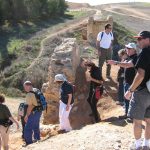In Israel, May is not a typical month for rain, let alone floods. On May 12, 2007, our jeep group had a trip planned for the Judean Desert. We were expecting pleasant, sunny, spring weather. But earlier in the week, weather forecasters had begun predicting rain for the weekend. As the weekend approached, we began hearing “possible flood” warnings.

There was no reason to cancel our outing. We only needed to stay on high ground. After embarking on our trip, we stayed tuned to the hourly news reports and kept hearing flood warnings. So we were certainly not going risk driving through the dry stream beds. But we certainly hoped we might chance upon a flood.
The clouds overhead were ominous. But no rain emerged.
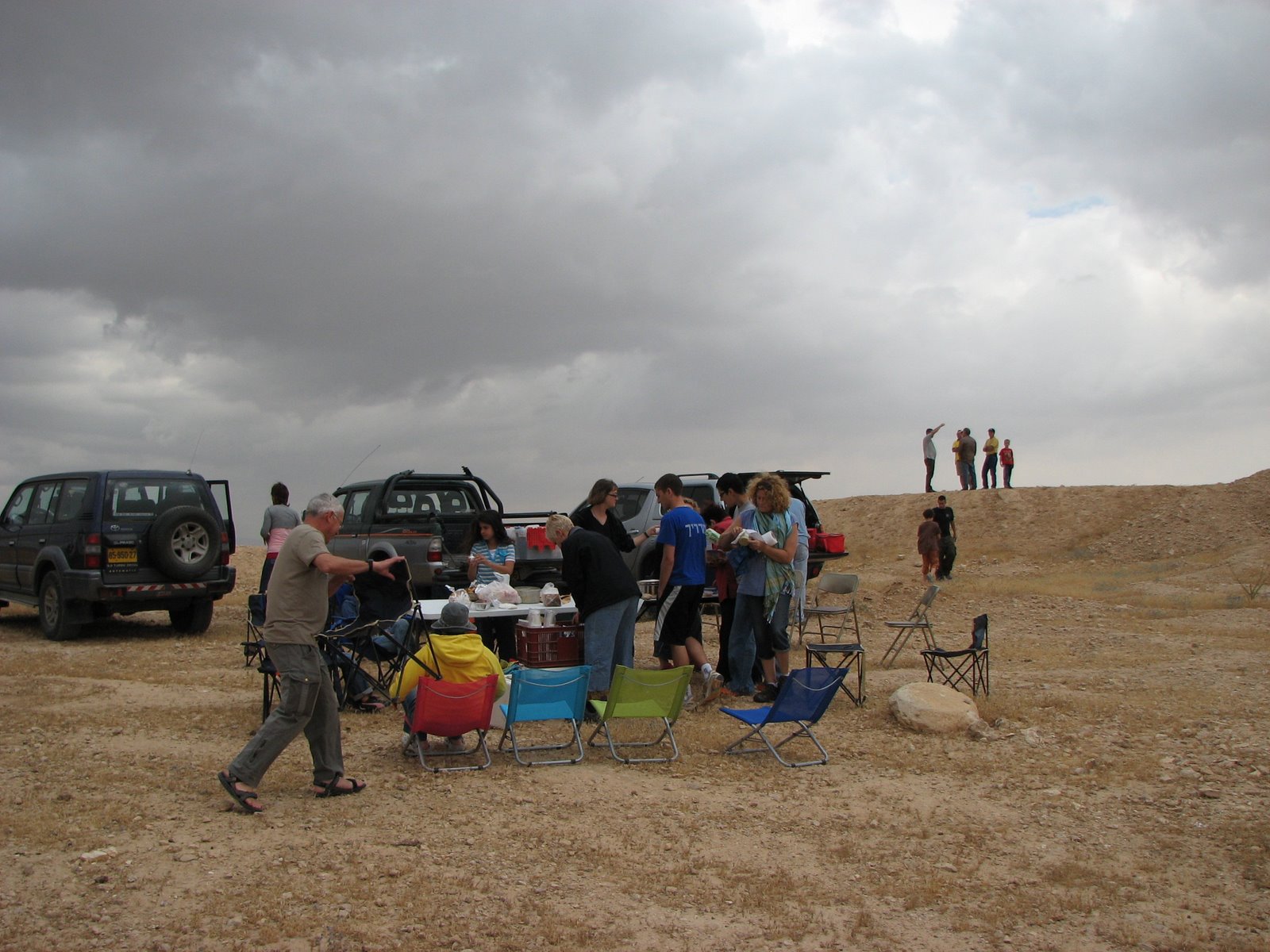
Our itinerary included an overlook of the Mar Saba Greek Orthodox Monastery and the Kidron Stream.

Our dear friend Yossi Dror from Kibbutz Erez often served as guide for our jeep excursions, sharing his wealth of knowledge with us, for the sheer pleasure of doing so. He had planned today’s itinerary.
For several years I had been asking Yossi to arrange a flood for one of our jeep trips. Today, it seemed, he might finally make my wish come true.
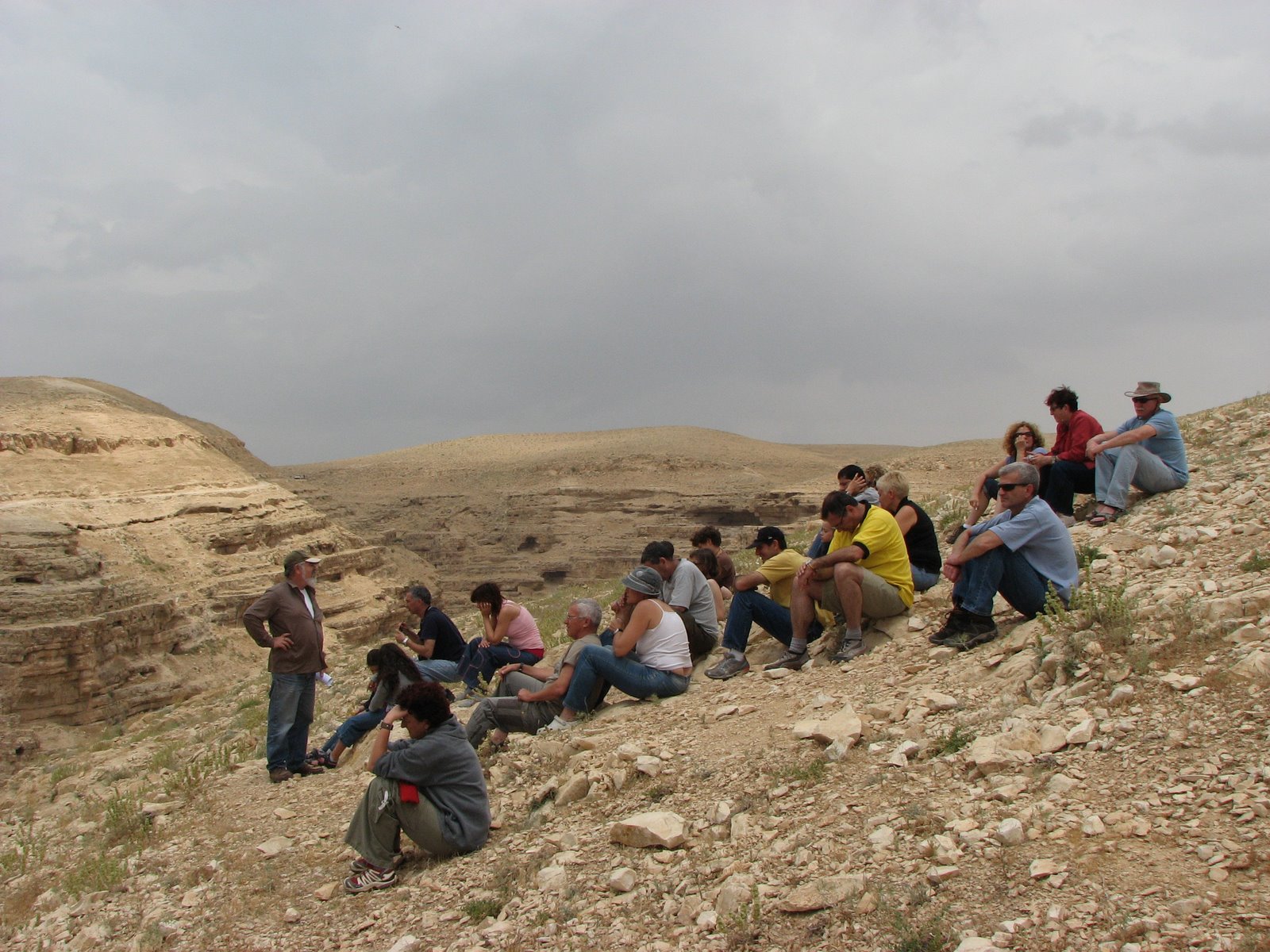
The next stop on our itinerary was the Hyrcania mountaintop fortress. We left the jeeps parked at the bottom of the mountain, and made a short, but steep, trek to the top.

Yossi gave us a brief guided tour of the ruins of Hyrcania. Over the Dead Sea to the east (in the background of the following photo) the sun was shining. But overhead, not far away, a huge black cloud drifted along. While listening to Yossi, I focused on that cloud, willing it to come in our direction and release its rain.

And then, as if my thoughts had energized the cloud, it began to rain. At first it was just a few drops, and we began our descent from Hyrcania without any real urgency.
Within moments the rain exploded into a downpour. Tomer and some others ran for cover in a recess in the rock facing. Tomer took this picture. I am the last in the line.
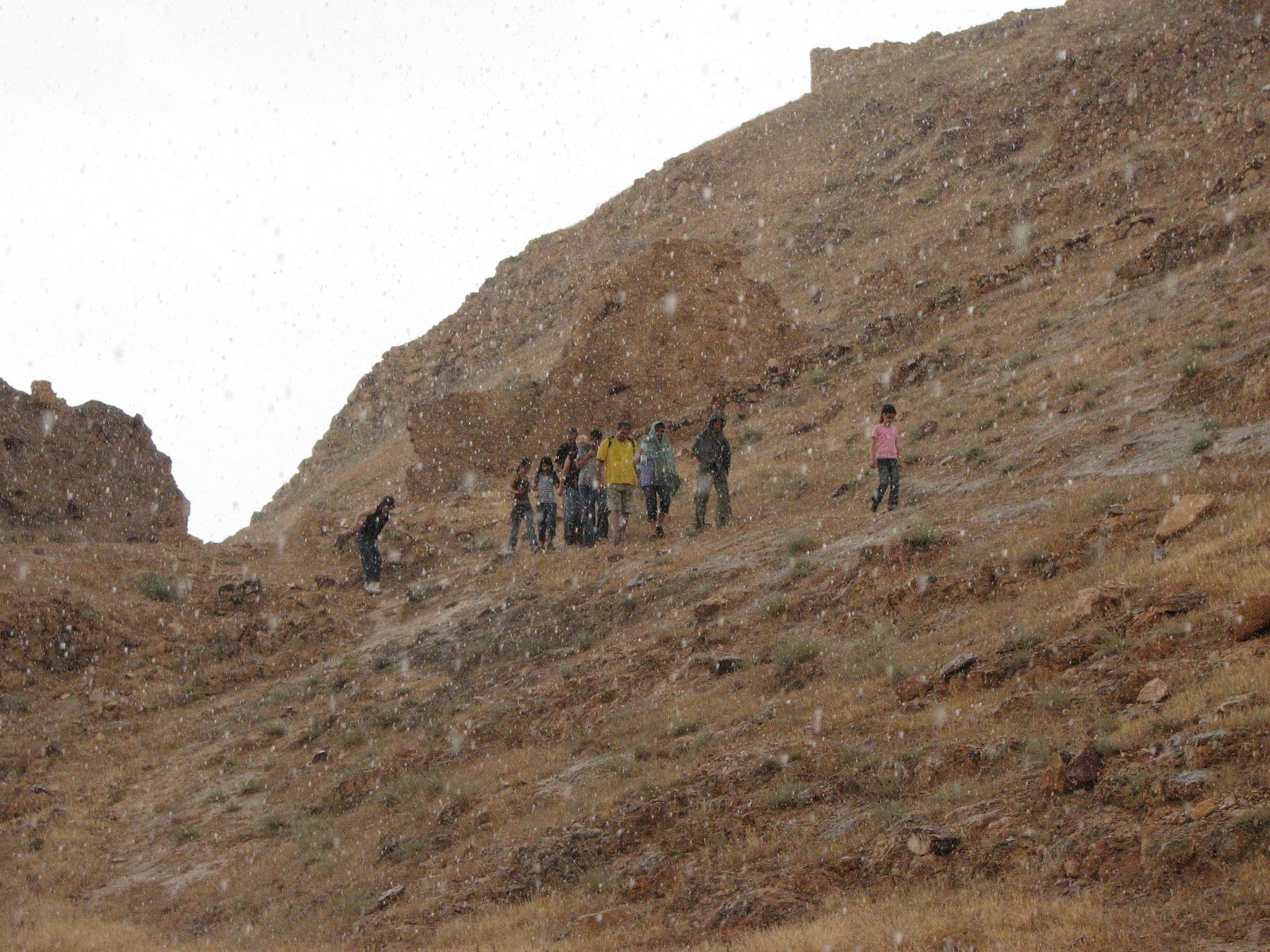
Unable to pass those ahead of me, I decided to dash into the shelter. Tomer filmed a brief video.
The rain quickly began to form a pool that threatened to flood our shelter. We realized we had to get off the mountain, and would have to get wet in the process.
As we reached the bottom of the mountain, Tomer filmed two more short videos.
Listen to the sound in the video. That’s not wind. That’s the rumbling of waters rushing down the mountain.
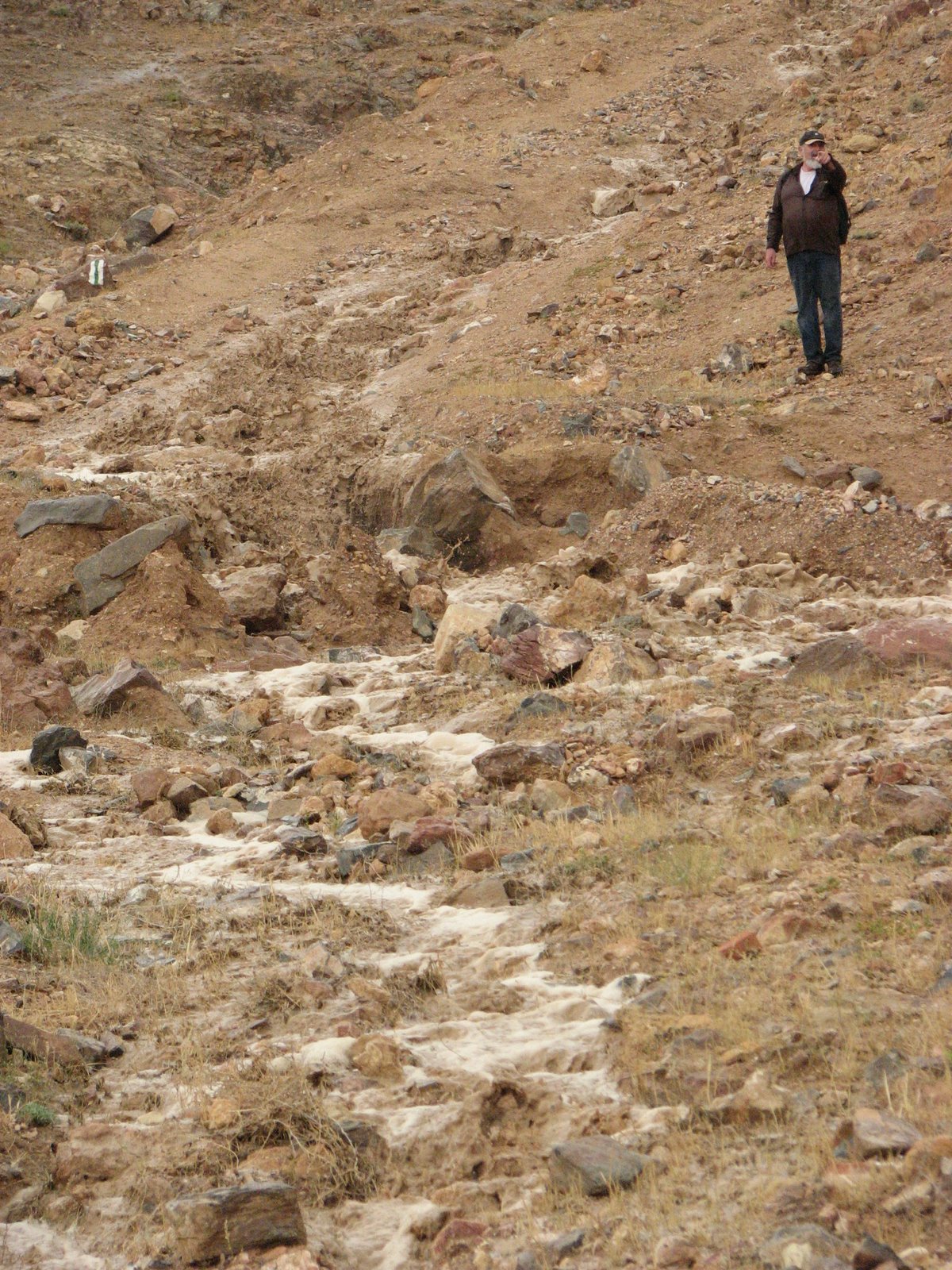
The adrenaline rush was also intense. I had completely forgot about being soaked and muddy. This was a once-in-a-lifetime experience. We were not just watching a flood. We had actually seen it materialize, starting from the first drops of rain up on the heights of Hyrcania (which appropriately sounds more like “hurricane” in Hebrew), growing into cascading torrents, and gushing into the stream beds below. Back in our jeeps, we had a few tense moments trying to get back on track. The rain had made the trail muddy and slick.
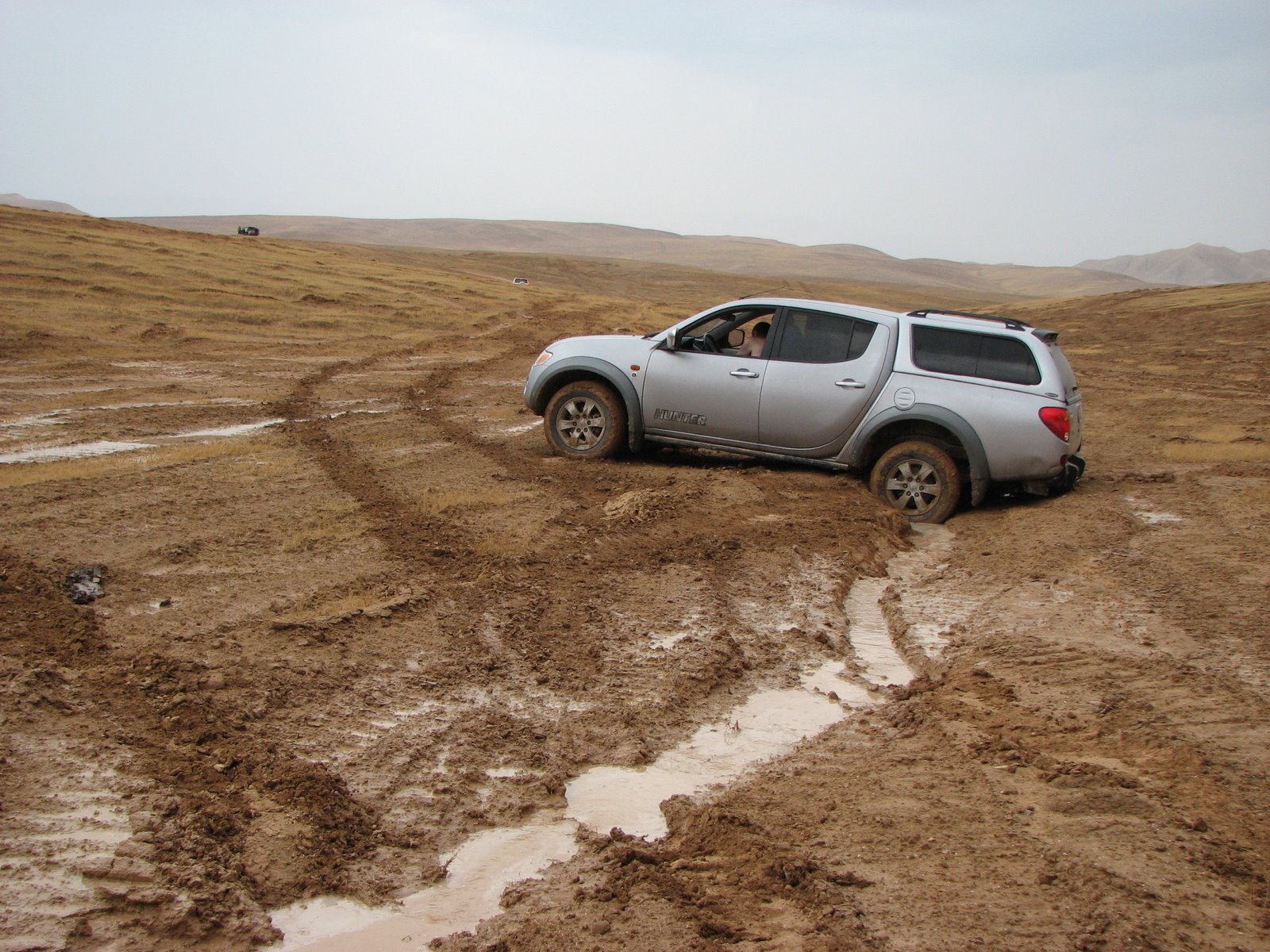
But soon we reached a solid, asphalt road.
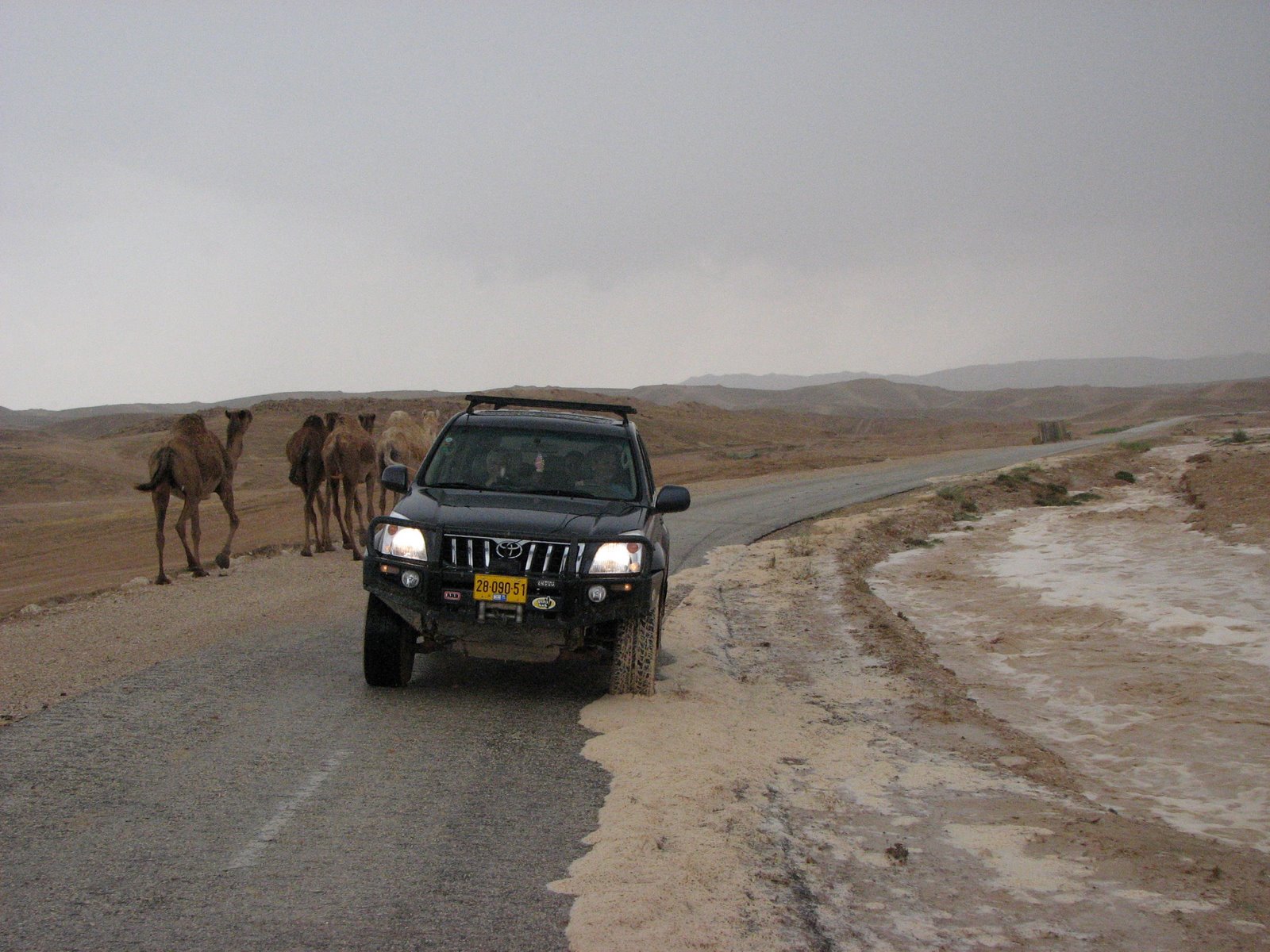
In recent years, Israel has improved the roads in this area, preventing them from getting washed out every time a flood occurs. Concrete bridges and water ducts now keep traffic on the road, and flood waters in the stream beds.
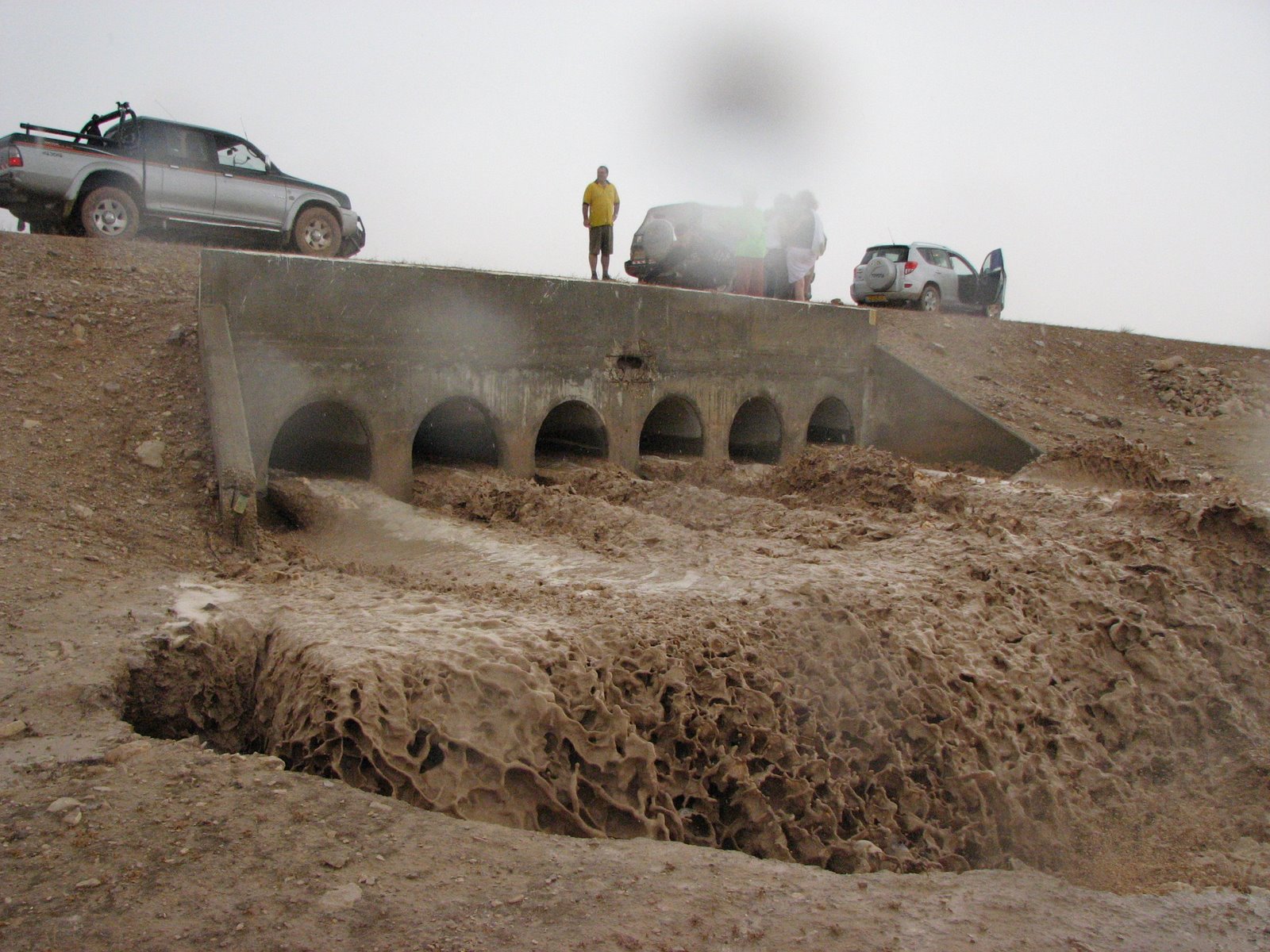
Soaked by the rain, and without change of clothes, we decided to head home. This had been the ultimate jeep excursion. What more could I ask for?
Funny Epilogue: This adventure reminded me of a joke my father once liked to tell. Two elderly gentlemen met in Florida and began talking about why they retired. The first man says, “I used to own a clothing factory. Business wasn’t so great. So when a fire burned it down, I took the insurance money and retired.” The second man says, “I used to own a machine shop, but it got destroyed in a flood. I felt I was too old to rebuild, so I took the insurance money and retired.” The first man looks stunned. “Tell me,” he says. “How do you start a flood?”
Sad Epilogue: The four hikers killed by the flash floods that day were abseiling down a cliff near the archeological site of Kumran, a point much further down the path of the flood waters, and hence much more dangerous than where we had been. Perhaps they had not heard, or perhaps they did not heed, the weather reports and warnings about potential floods. A news report in Hebrew.
And this report:
“May 12, 2007: A rather deep upper-level low over Israel, along with a surface sharav low east of Israel, caused unseasonably large amounts of rain in many areas of Israel, from the Shfela lowlands eastward to the Jordan River Valley and Arava. 10 to 15 mm fell in most of these areas, while 20 to 30 mm fell in Jerusalem and the Judean Mountains, 5 to 10 times the entire monthly average. The rain was accompanied by thunderstorms and lower-than-average temperatures. As a result of the heavy rain in the Judean Mountains, a flash flood in the Qumran stream in the Judean Desert killed 4 hikers. The intensity of the flood was extreme, a 1-in-50-year event according to the Water Authority.”
Source: David Shohami’s Israel Storm Chasing and Weather Photography website
